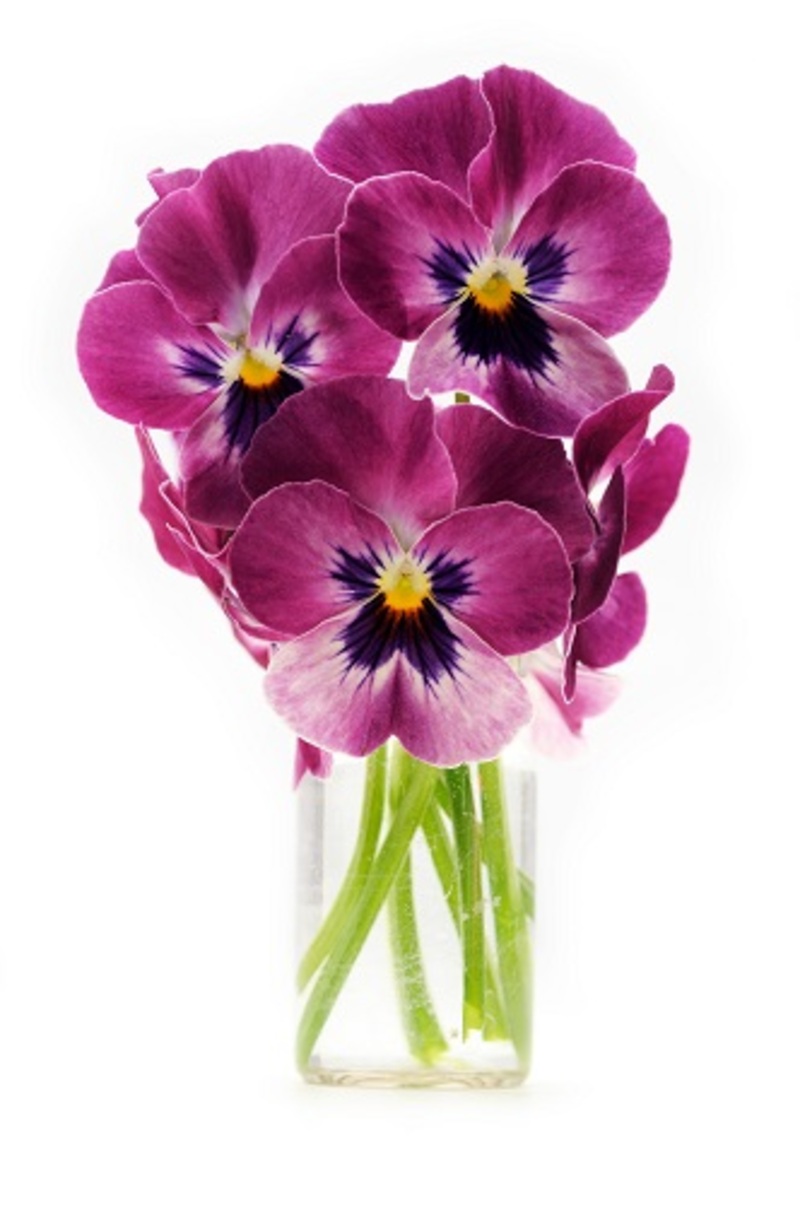Explore the Symbolism of Your Birth Flower and Learn More About You
Posted on 14/08/2025
Explore the Symbolism of Your Birth Flower and Discover More About Yourself
Have you ever wondered if your birth month says something unique about who you are? Beyond birthstones and zodiac signs, there's a beautiful, fragrant tradition--birth flowers. These special blooms represent each month of the year, carrying meanings and symbolism often overlooked. By learning about your personal birth flower, you might discover fascinating insights about your personality, values, and life path. Join us in this comprehensive guide to explore the symbolism of your birth flower and learn what it reveals about you!

What Are Birth Flowers?
Just as every month is associated with a gemstone, so too is it paired with a unique flower. This centuries-old tradition connects people with the beauty and meaning of nature. The practice of assigning flowers to months dates back to Roman times, with further roots in the language of flowers (floriography) that gained popularity during the Victorian era.
Your birth month flower symbolizes special virtues, emotions, and qualities. Understanding your birth blossom can give you a greater sense of connection with yourself and offer a new lens through which to view your life's journey.
Why Do Birth Flowers Matter?
Flowers have long been used to express emotions. From secret love messages to spiritual meanings, each bloom has its own language. Knowing your birth flower symbolism isn't just trivia; it's a delightful way to reflect on your strengths, values, and the essence of who you are.
- Personal Identification: Adds emotional meaning to special occasions like birthdays, anniversaries, and personal milestones.
- Gift Ideas: Picking the right bloom can make your gift more thoughtful and memorable.
- Self-Discovery: Deepens your understanding of your personal qualities and how you relate to others.
A Month-by-Month Guide to Birth Flowers and Their Meaning
January: Carnation
The carnation, often blooming in winter's coldest days, represents admiration, love, and distinction. Its ruffled, vibrant petals reflect resilience and passion.
- Color meanings: Red (deep love), Pink (affection, gratitude), White (pure love, good luck).
- Symbolism: You may be a steadfast, loving individual who lights up even the darker days. Carnation people are often loyal friends and diligent workers.
February: Violet & Iris
February is unique--it boasts not one, but two birth month flowers: the delicate violet and the regal iris.
- Violet Symbolism: Modesty, faithfulness, sincerity. Violets suggest you are gentle, humble, and deeply loyal.
- Iris Symbolism: Wisdom, hope, trust. Those represented by iris are often intuitive, imaginative, and guiding lights to others.
March: Daffodil
The cheerful daffodil heralds the renewal of spring. Its sunny yellow is an emblem of new beginnings, happiness, and hope.
- If your birthday falls in March, you radiate optimism and resilience. You inspire those you meet to keep going, even through adversity.
- Fun fact: In some cultures, gifting a bunch of daffodils brings luck and prosperity.
April: Daisy & Sweet Pea
April babies are associated with both the daisy and sweet pea.
- Daisy: Innocence, purity, loyal love. You have a joyful, open-hearted spirit and are often a source of cheer for others.
- Sweet Pea: Thankfulness, departure, bliss. You are known for your appreciation of life's pleasures and your ability to say goodbye with grace when needed.
May: Lily of the Valley & Hawthorn
The elegant lily of the valley is known for its delicate fragrance and is a symbol of humility, sweetness, and the return of happiness. The hawthorn flower suggests hope and supreme happiness.
- If you are born in May, you are cherished for your kindness and gentle spirit. You lift others up and remind them happiness always returns.
June: Rose & Honeysuckle
June is all about romance, beauty, and devotion, thanks to its association with the rose and honeysuckle.
- Rose: Love, passion, honor. Each color tells a different story: red (love), yellow (friendship), white (purity), pink (admiration).
- Honeysuckle: Devotion, happiness, sweetness. June-born people are affectionate, loyal, and bring sweetness into relationships.
July: Larkspur & Water Lily
July's blooms are the larkspur and water lily.
- Larkspur: Positivity, dignity, open heart. Your openness makes others feel welcomed and accepted.
- Water Lily: Purity, enlightenment, rebirth. You have a tranquil energy and help others find peace in turbulent times.
August: Gladiolus & Poppy
The stately gladiolus stands for strength, integrity, and infatuation. The vibrant poppy symbolizes imagination and remembrance.
- People born in August are often headstrong, passionate, and inspiring. They chase dreams and encourage others never to give up.
September: Aster & Morning Glory
Aster is named after the Greek word for "star." These blooms symbolize wisdom, faith, and valor. September is also graced with the morning glory, representing affection and love that endures.
- If you're a September baby, you're perceptive, patient, and possess quiet strength. Friends seek your wise counsel.
October: Marigold & Cosmos
The robust marigold bursts forth in fiery hues, symbolizing creativity, passion, and warmth. Cosmos speaks of harmony and tranquility.
- October-borns are vibrant personalities, creative souls, and value harmony in everyday life. Like marigolds, you light up any space you enter.
November: Chrysanthemum
Few flowers weather late autumn like the chrysanthemum, the emblem of loyalty, friendship, and longevity.
- You are known for your steadfastness, compassion, and reliability. Chrysanthemum people are often the backbone of their communities.
December: Narcissus & Holly
December boasts both the narcissus (often the paperwhite variety) and holly.
- Narcissus: Good wishes, hope, self-esteem. Those who identify with narcissus are positive, self-assured, and bring hope to those around them.
- Holly: Protection, festivity, domestic happiness. December babies are welcoming hosts and protectors of family traditions.
What Your Birth Flower Says About Your Personality
The meaning of your birth flower can reflect your inner strengths and unique traits. Here's a quick summary to help you learn more about yourself through your birth flower:
- Spirit of the Carnation (January): Loyal, passionate, and resilient.
- Soul of the Violet/Iris (February): Insightful, modest, faithful.
- Energy of the Daffodil (March): Optimistic, warm, inspiring.
- Heart of the Daisy/Sweet Pea (April): Cheerful, pure, grateful.
- Gentleness of Lily of the Valley/Hawthorn (May): Humble, tender, hopeful.
- Passion of Rose/Honeysuckle (June): Romantic, devoted, honorable.
- Nature of Larkspur/Water Lily (July): Open-hearted, tranquil, wise.
- Determination of Gladiolus/Poppy (August): Strong-willed, creative, courageous.
- Wisdom of Aster/Morning Glory (September): Thoughtful, faithful, insightful.
- Radiance of Marigold/Cosmos (October): Charismatic, harmonious, vibrant.
- Devotion of Chrysanthemum (November): Reliable, compassionate, kind.
- Spirit of Narcissus/Holly (December): Hopeful, festive, supportive.
How to Celebrate Your Birth Flower
Let your personal birth flower add meaning to your life. Here are creative ways to honor your special bloom:
- Plant your birth flower in your garden, balcony, or even a small pot to deepen your personal connection.
- Give birth flower bouquets for birthdays, anniversaries, or to spread positivity.
- Wear your birth flower as jewelry or accessories, such as necklaces or brooches, to keep their symbolism close.
- Decorate your home with images or motifs of your birth flower for peace, strength, or inspiration.
- Learn the language of flowers (floriography) and include meaningful messages in your gifts.
Birth Flower Symbolism in Different Cultures
While the tradition of birth flowers is rooted in Western floriculture, many cultures around the world ascribe their own meanings to flowers:
- Japanese Hanakotoba: Each flower conveys emotion--chrysanthemum means "noble," while peony means "good fortune."
- Victorian England: The language of flowers was used for romantic messaging, sometimes even in secret.
- Ancient Rome and Greece: Flowers like the daffodil and rose were seen as divine, tied to gods and myths.
Birth Flowers, Astrology, and Birthstones: A Harmonious Connection
Did you know? Often, the birth flower, birthstone, and zodiac sign all align to form a meaningful triad for each month. For instance:
- April's diamond represents strength, paired with the daisy's innocence--together symbolizing the balanced joy of spring.
- August's vibrant peridot and sunflower-yellow gladiolus capture high summer's energy and positivity.
This synergy offers a holistic way to learn more about yourself by uncovering the deeper layers behind your birth month.

Frequently Asked Questions About Birth Flowers
Are there official birth flowers for each month?
Yes! Though some months have more than one flower, every month is officially associated with at least one bloom. These assignments have been solidified by florists over time, and are widely recognized today.
Can I have more than one birth flower?
Absolutely. Several months, such as April and December, are celebrated with two birth flowers--giving you even more ways to express your spirit.
Does my birth flower influence my personality?
While birth flowers don't determine your character, their symbolism often reflects qualities valued by those born in their month. Many people resonate with their flower's deeper meaning.
How can I use this knowledge in my life?
Explore the symbolism of your birth flower by incorporating it into daily life--whether through your garden, gifts, decor, or meditation. Let your birth blossom inspire you to embrace your strengths!
Conclusion: Embrace the Meaning and Beauty of Your Birth Flower
Birth flowers are more than just a charming tradition. They are nature's way of celebrating the unique spirit you bring into the world. By learning about your birth flower symbolism, you learn more about yourself--discovering qualities to cherish and inspire both your own growth and that of those around you. Embrace your birth bloom, share your newfound wisdom, and let the language of flowers enrich your journey through life.
Are you ready to explore the symbolism of your birth flower and discover more about you? Plant your bloom, give it as a gift, or simply reflect on its meaning every day. Nature has something beautiful to say--let your birth flower speak it for you!







